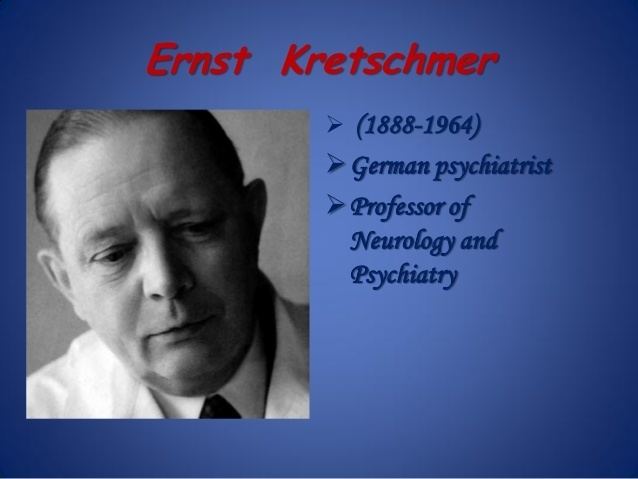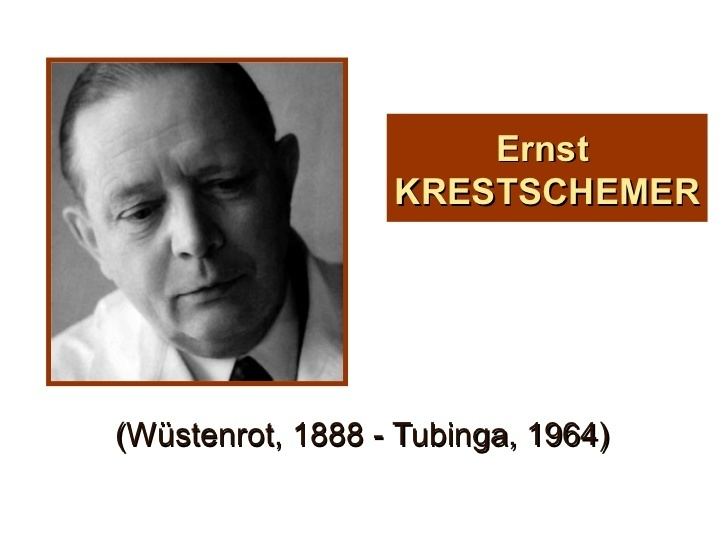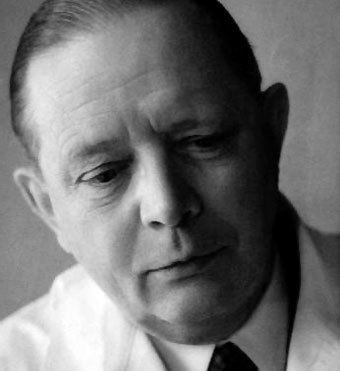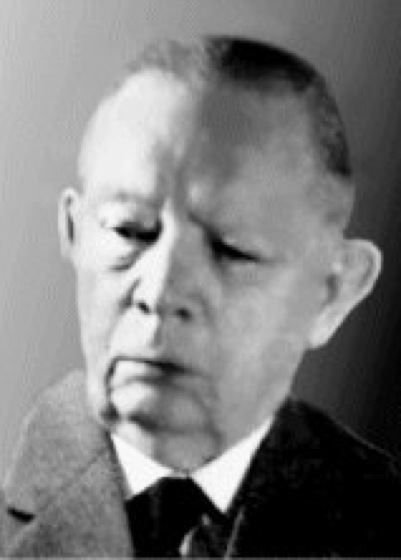Nationality Germany Education University of Tubingen Name Ernst Kretschmer | Institutions Marburg University Known for Personality type | |
 | ||
Died February 8, 1964, Tubingen, Germany Books Physique and character, Hysteria, Reflex, and Instinct, The psychology of men of genius | ||
CLASIFICACION BIOTIPOLOGICA SEGUN ERNST KRETSCHMER
Ernst Kretschmer (8 October 1888 – 8 February 1964) was a German psychiatrist who researched the human constitution and established a typology.
Contents

Life

Kretschmer was born in Wüstenrot near Heilbronn. He attended Cannstatt Gymnasium, one of the oldest Latin schools in Stuttgart area. From 1906 to 1912 he studied theology, medicine, and philosophy at the universities of Tübingen, Munich and Hamburg. From 1913 he was assistant of Robert Gaupp in Tübingen, where he received his habilitation in 1918. He continued as assistant medical director until 1926.

Kretschmer was the first to describe the persistent vegetative state which has also been called Kretschmer's syndrome. Another medical term coined after him is Kretschmer’s sensitive paranoia.[1] This classification has the merit of singling out "a type of paranoia that was unknown" prior to Kretschmer, and which "does not resemble the stereotypical image [...] of sthenic paranoia". Furthermore, between 1915 and 1921 he developed a differential diagnosis between schizophrenia and manic depression.

Kretschmer is also known for developing a classification system that can be seen as one of the earliest exponents of a constitutional (the total plan or philosophy on which something is constructed) approach. His classification system was based on three main body types: asthenic/leptosomic (thin, small, weak), athletic (muscular, large–boned), and pyknic (stocky, fat). (The athletic category was later combined into the category asthenic/leptosomic). Each of these body types was associated with certain personality traits and, in a more extreme form, psychopathologies. Kretschmer believed that pyknic persons were friendly, interpersonally dependent, and gregarious. In a more extreme version of these traits, this would mean for example that the obese are predisposed toward manic-depressive illness. Thin types were associated with introversion and timidity. This was seen as a milder form of the negative symptoms exhibited by withdrawn schizophrenics. However, the idea of the association of body types with personality traits is no longer influential in personality theory.
In 1926 he became the director of the psychiatric clinic at Marburg University.
Kretschmer was a founding member of the AÄGP (General medical society for psychotherapy) which was founded on January 12, 1927. He was the president of AÄGP from 1929. In 1933 he resigned from the AÄGP for political reasons, but started to support the SS and signed the "Vow of allegiance of the professors of the German universities and high-schools to Adolf Hitler and the National Socialistic state." He did not oppose the eugenic laws of Nazi Germany.
From 1946 until 1959, Kretschmer was the director of the psychiatric clinic of the University of Tübingen. He died, aged 75, in Tübingen.
Character styles
Kretschmer divided personality into two "constitutional groups": Schizothymic, which contain a "Psychaesthetic proportion" between sensitive and cold poles, and Cyclothymic which contain a "Diathetic" proportion between happy and sad. The Schizoids consist of the Hyperesthetic (sensitive) and Anesthetic (Cold) characters, and the Cycloids consist of the Depressive (or "melancholic") and Hypomanic characters.
